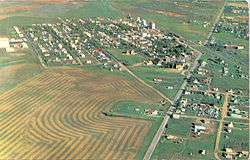Radville
| Radville | |
|---|---|
| Town | |
|
Radville, about 1970 | |
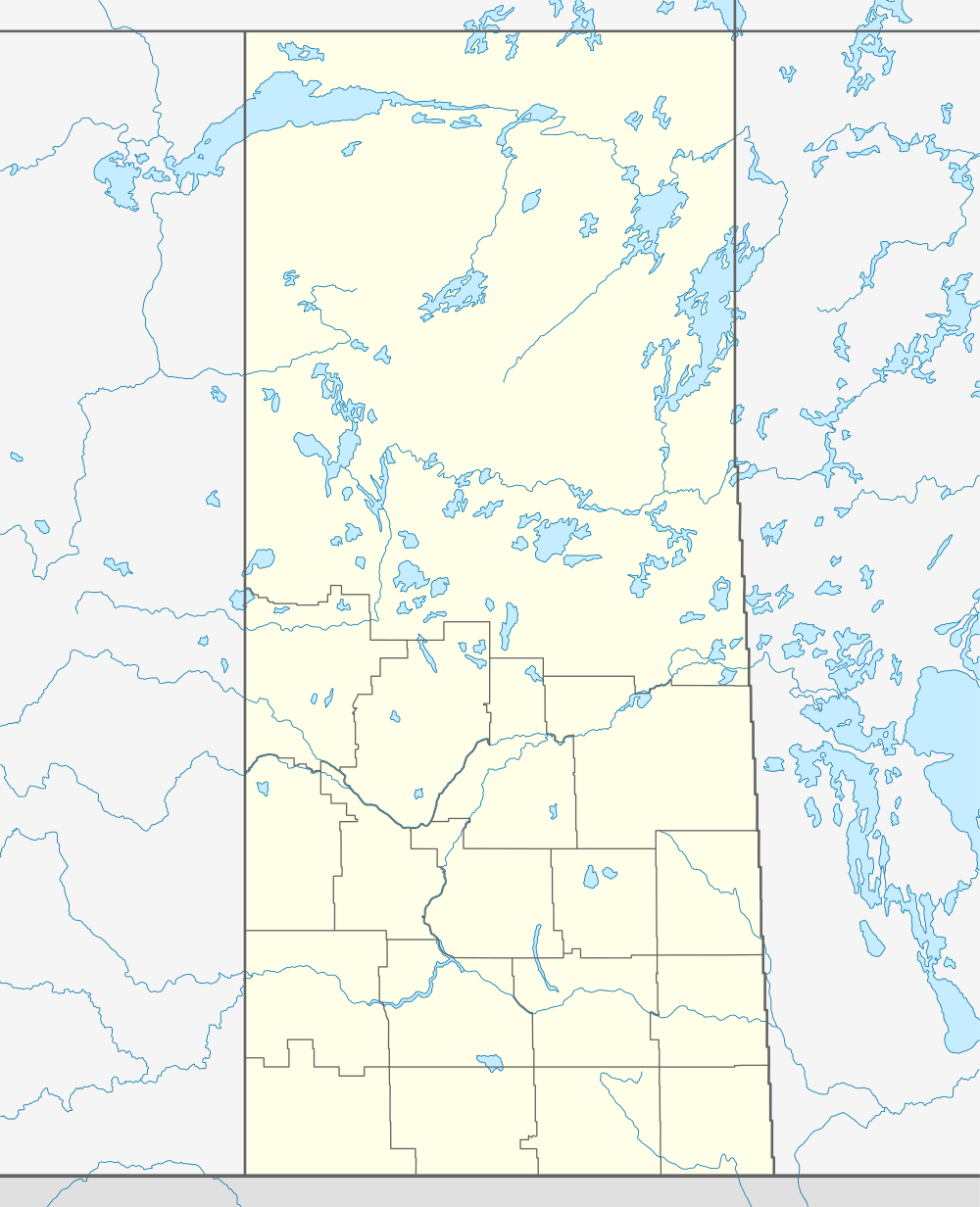 Town of Radville in Saskatchewan | |
| Coordinates: 49°28′40″N 104°17′45″W / 49.47778°N 104.29583°W | |
| Country | Canada |
| Province | Saskatchewan |
| Government | |
| • Governing body | Radville Town Council |
| Area | |
| • Total | 2.16 km2 (0.83 sq mi) |
| Population (2011) | |
| • Total | 860 |
| • Density | 398.6/km2 (1,032/sq mi) |
| Time zone | CST (UTC-6) |
| Postal code span | List of S Postal Codes of Canada |
| Area code(s) | +1-306 |

Radville is a small valley town in southern Saskatchewan, Canada. A small river, Long Creek runs through the north end of the town providing fishing and recreation to the local children and parents. The creek meanders by the east side of the town and then to the south where a second dam is located for the water supply pumphouse.
The town is in the rural municipality #38 of Laurier (incorporated December 13, 1909). It was incorporated in 1911 after being settled in 1895, named after Conrad Paquin.
Radville has a large proportion of French-speaking people.
Notable buildings
One of the historic buildings in Radville is the local restaurant. The building started as the Bon Ton Barber Shop and the first doctor in Radville, Dr. Joseph P. O'Shea's office, which later became the Radville Cafe, followed with the Paris Cafe, the Boston Cafe, the Lasalle, the Glencoe, the Canadian Cafe, the Radville Family Restaurant, and in 2006, the Radville Family Restaurant II. [Reference: A Community in Blooms Project]. The Canadian Cafe was run by Bob and Judy Lee from 1965 until their retirement in 1996.
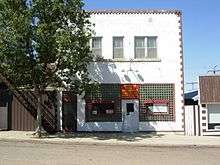
Other restaurants that operated in Radville included the local drive-in Hannigan's, (c. 1970-1980) and the restaurant converted from the old Radville townhall called the Dustbowl Diner (c. 1980-1981). Jake Wong's cafe operated from about 1920 until the early 1950s when his daughter Lily and son-in-law Tommy Chow took it over. Lily's sister Jean also ran a cafe across the street.
There was a large pool room, barber shop and bowling alley next door to Wong's cafe.
Radville has had several theaters. The last one, the Oasis Theater closed its doors in 1977 (needs confirmation of date), showing Star Wars as one of its last movies. After standing empty for a few years, the Oasis was bought by local entrepreneur George Hays and converted into the Alley Oops bowling alley. The newspaper South Saskatchewan Star was owned and operated by Oscar Stitt, A few years afterwards, George Hays purchased the local newspaper, the Radville Star, and moved the publication into the same building. The other Theater owned by Ham Ferris, closed much earlier and was converted into a senior citizens hall in 1972 (needs confirmation of date).
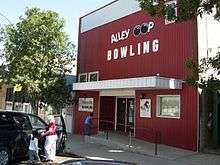
The local pharmacy, the Radville Drug Store, was operated by Ron Zimmers from the late 1960s through to the 2000s. Initially, a pharmacy degree was not required, however as the operations grew, Ron proudly worked his education to achieve his pharmacy degree. The first pharmacy was opened by Harry Koch in the early 1920s and was then sold to Vince Kimball in the mid 1950s.
The Canadian Imperial Bank of Commerce, originally the Bank of Commerce, was built in the early 1920s and still operates. The Empire Hotel was built in the early 20's and is still in operation.
The Catholic school, commonly called the Separate School, is named St. Oliver's School. The principal was Ed Borsa in the late 1970s and early 1980s. As the school was located very near the Radville Public School, the children from the two schools would often have soccer matches and other sports events as rivals.
There was also the Christian College located on the east side of Long Creek.
The Radville Public School, a traditional 3 story cube shaped red brick building, burned to the ground on Sunday January 23, 1977 (date requires confirmation). A mimeography machine with its alcohol based image transfer fluid created an explosion in the staff office on the second floor. Picture windows across the street were cracked as a result of the explosion. The new Radville Elementary School opened a few years later. In the interim, the students were sent to some reserved classrooms in the high school, and the younger students were sent to the Catholic school. The principal at the time of the fire was Warren Blackstock.
Churches in Radville were the United, Anglican, Pentecostal, Church of Christ, Catholic.
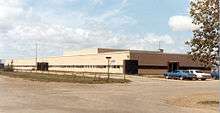
The high school was called the Radville Regional High School. Many students bore the letters of RRHS for the local Rebels team. The stability of certain teachers who had long terms in the school created a well balanced, solid background for graduates in furthering education. Floyd Cousins was a favorite principal during the 1940s and 1950s. The school principal was Charles Haggarty from 1967 until 1983. Other key teachers include Wayne Hurlbert,Miss Lecuyer, Estelle Johnston, Ethel Carlson (English), C.K. Lai (Algebra, Geometry), Richard (Dick) Schmidt (Coach).
Eva McNaught, who was wife to the fire chief and drayman Harold, ran Eva's Popcorn stand for many years to the delight of several generations of Radvillites. Due to the warm long languishing summer nights typical of southern prairie towns, many people stayed out in the evenings and enjoyed the Saskatchewan summer weather.
Radville uses a pumphouse for water treatment and supplying water pressure to its residents. The pumphouse is located on Saskatchewan Highway #28 junction into Radville.
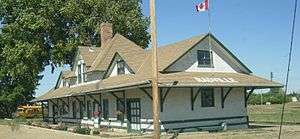
Radville used to be a major hub of activity throughout the 1920s to 1970's with a livery, the CN train and 5 grain elevators. Radville was a Canadian National Railway divisional point. It had a roundhouse with turntable, water tank, sand house, coal dock, ice house, bunkhouse, Roadmaster office, stores, stockyard, loading platform, freight and express service. The Radville railway station still remains though now used as a museum. All of the farm implement manufacturers had dealers, i.e. Massey Harris (Adrian Roy), John Deere, Ford, Case (Haden's). Automobile dealerships included General Motors (Robertson's), Ford, Chrysler. Claude Delaye operated a blacksmith shop. There were 4 general stores, Jack Seede's, Hussein Shibley's, Joe Carles, and Ham Ferris, Melda Morrissette's dress shop, Tetrault's bakery, Watson's hardware store, Clarke's Electric, appliance store, Credit Union, jeweller, 2 barber shops, dry cleaner (Legault's), 2 lumber yards, McIlrath and Security Lumber, Vennard's locker plant, liquor store, and a law office (George Thompson). This diminished when Highway #28 was upgraded in about 1975. With horses virtually gone and replaced by automotives and substantially improved roads, the next largest urban center of Weyburn received more and more of Radville's local regional commerce.
Larsen Dam
About a mile north of the town is a dam on the creek, commonly referred to as the Radville Dam or the Larsen Dam. This water reserve was used as the primary water reservoir for Radville until approximately 1984, at which time the town decided to use deep drilled water wells. The dam is stocked by the wildlife and fisheries department of the government. In the 1970s and the earlier 1980s, the dam was stocked with northern pike (or "jackfish") and fresh water perch. Later it was stocked with pickeral (or "walleye") and then with trout.
People
Garbage Man
To the east of the town a small road leads to the local airport and to the old dump grounds. About in 1980, a new landfill was selected several miles away, southwest from the town. A walkway was built in 1994 and named Claffey Blvd, in honor of Vernon Claffey, who was the very well loved garbage man for Radville from the late 1930s to 1980s. Vernon provided many old toys that he personally gathered and fixed to the poorer families in Radville.
People
Radville has an active winter community, featuring a hockey rink with the Radville Nationals hockey team. And like most Canadian prairie communities, the town also has a curling rink.
Radville produced several professional hockey players including: Reid Williams, Rodney Williams, and Darcy Verot.
In the 1980s, Tim Calibaba, son of local businessman Bill Calibaba formed TWC. He caught the early adoption by Canadians of Mutual Funds and other financial instruments. TWC grew by association and agencies throughout western Canada until it was bought out by Berkshire Investments(Burlington, ON) in 2003 and became Berckshire-TWC Financial Group Inc. In Fall of 2007, Manulife Financial purchased Berkshire-TWC. The office continued to operate in Radville as Manualife Financial, for a couple of years before being closed.
Radville is home to artist and sculptor, Scott Chandler Mcleod. Another prominent artist from Radville is Yvette Moore.
Rodney MacDonald, a lawyer who practises and lives in the region, is an environmentalist who provided much support for the groups working against the Raferty Dam project. c. 1988.
Many famous politicians are from the Radville district. The Websters, and recently, the 2004 Finance Minister Ralph Goodale. Another well-known politician is Roy Bailey (politician). And one can't forget his brother, Ray Bailey, a founding member of the Western Canadian Concept (WCC) party.
History of Mayors
- Metro Smigarowski
- Shropshire (c. 1970)
- Wilfred Bouchard
- Alan Roth
- Darald Marin
- Armand Bourassa
- Terry Calibaba (2002)
- David Bellavance (2009)
- Shirley Cancade
Population
Population of Radville in 2006 was 755, up from 735 in 2001, according to Statistics Canada. Radville is part of the prairie boom town set in Southern Saskatchewan. Many pioneers set up homesteads with the encouragement of the Canadian government in the late 19th and early 20th centuries. At peak population in the early 1960s, Radville had approx 5000 residents. Throughout the 1970s and early 1980s, Radville's population was around 1000 people, and diminishing as better means of transport and lifestyle changes meant fewer people were interested in the small farm community lifestyle.
| Canada census – Radville community profile | |||
|---|---|---|---|
| 2011 | 2006 | ||
| Population: | 860 (+8.4% from 2006) | 755 (+2.7% from 2001) | |
| Land area: | 2.16 km2 (0.83 sq mi) | 1.86 km2 (0.72 sq mi) | |
| Population density: | 398.6/km2 (1,032/sq mi) | 405.2/km2 (1,049/sq mi) | |
| Median age: | 42.7 (M: 41.9, F: 43.0) | ||
| Total private dwellings: | 390 | 361 | |
| Median household income: | $61,356 | ||
| References: 2011[1] 2006[2] | |||
Location
Radville can be found at latitude 49° 27' 40.83" N, longitude 104° 17' 45.17" at an elevation of 2060 ft (ref: Google Earth)
The province has designated Radville with its own Regional Park to serve the local district. See Saskatchewan Regional Parks .
Nearby, the village of Ceylon is 14 miles west, and the city of Weyburn is 32 miles to the northeast. Other nearby communities include Lake Alma, Minton, Gladmar, Pangman, Ogema, Midale and the Port of Regway. These communities heavily support the Radville economy as it is the largest center in the area.
Major urban centers include Regina which is 92 miles to the north and Moose Jaw, 89 miles to the northwest.
Saskatchewan Highway 28 and Highway 377 pass through Radville.
References
For those seeking more history, in 1983 The Yesteryears was published.
- ↑ "2011 Community Profiles". Canada 2011 Census. Statistics Canada. July 5, 2013. Retrieved 2012-04-14.
- ↑ "2006 Community Profiles". Canada 2006 Census. Statistics Canada. March 30, 2011. Retrieved 2012-04-14.
External links
Coordinates: 49°28′N 104°17′W / 49.467°N 104.283°W
